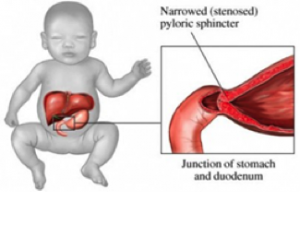Endopyloric Tool

Principal Investigators:
Carolyn Cochenour, Research Engineer
Timothy D. Kane MD
Axel Krieger PhD
The Need:
Infantile hypertrophic pyloric stenosis (IHPS) is the condition related to the abnormally hypertrophied pylorus muscle, which is the sphincter at the outlet of the stomach through which food passes into the duodenum. The resultant narrowing of the pyloric channel at the outlet of the stomach produces a functional blockage and leads to progressive vomiting in infants and inability to maintain adequate nutrition or hydration. Most commonly, patients develop IHPS between 2–12 weeks of age. The treatment for this condition is a surgical procedure called a pyloromyotomy, and currently there are no medications or alternative treatments available. Since many of these infants are younger than 12 weeks, any procedure involving anesthesia and/or an extended hospital stay causes a higher risk and stress for the families.
The Device:
The Endopyloric Tool is a balloon catheter used along with a pediatric endoscope that will be used to provide non-invasive treatment for infantile hypertrophic pyloric stenosis. This device will dilate the hypertrophied pyloric muscle in a controlled and safe manner resulting in the relief of the gastric obstruction without surgery. Three of the major complications associated with the current surgical procedure are a direct result of creating an opening in the body to relieve the stenosis. Wound infection, hernia, procedural complications and conversion (open to laparoscopic) are all obviated when the incision into the abdominal cavity is eliminated.
How has APDC helped?
APDC funds were used for testing and manufacturing production ready prototypes.
Progress of Device Development





